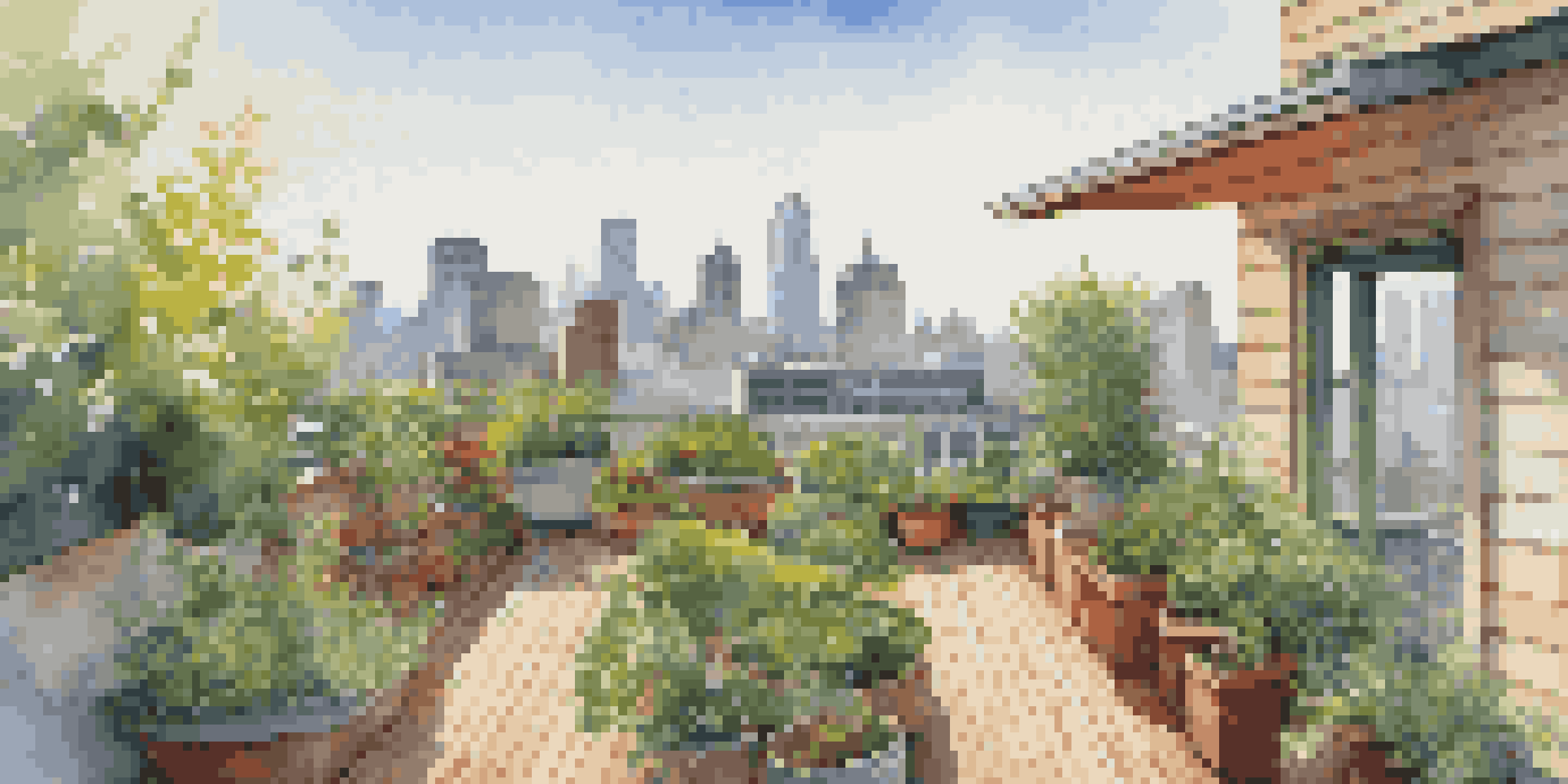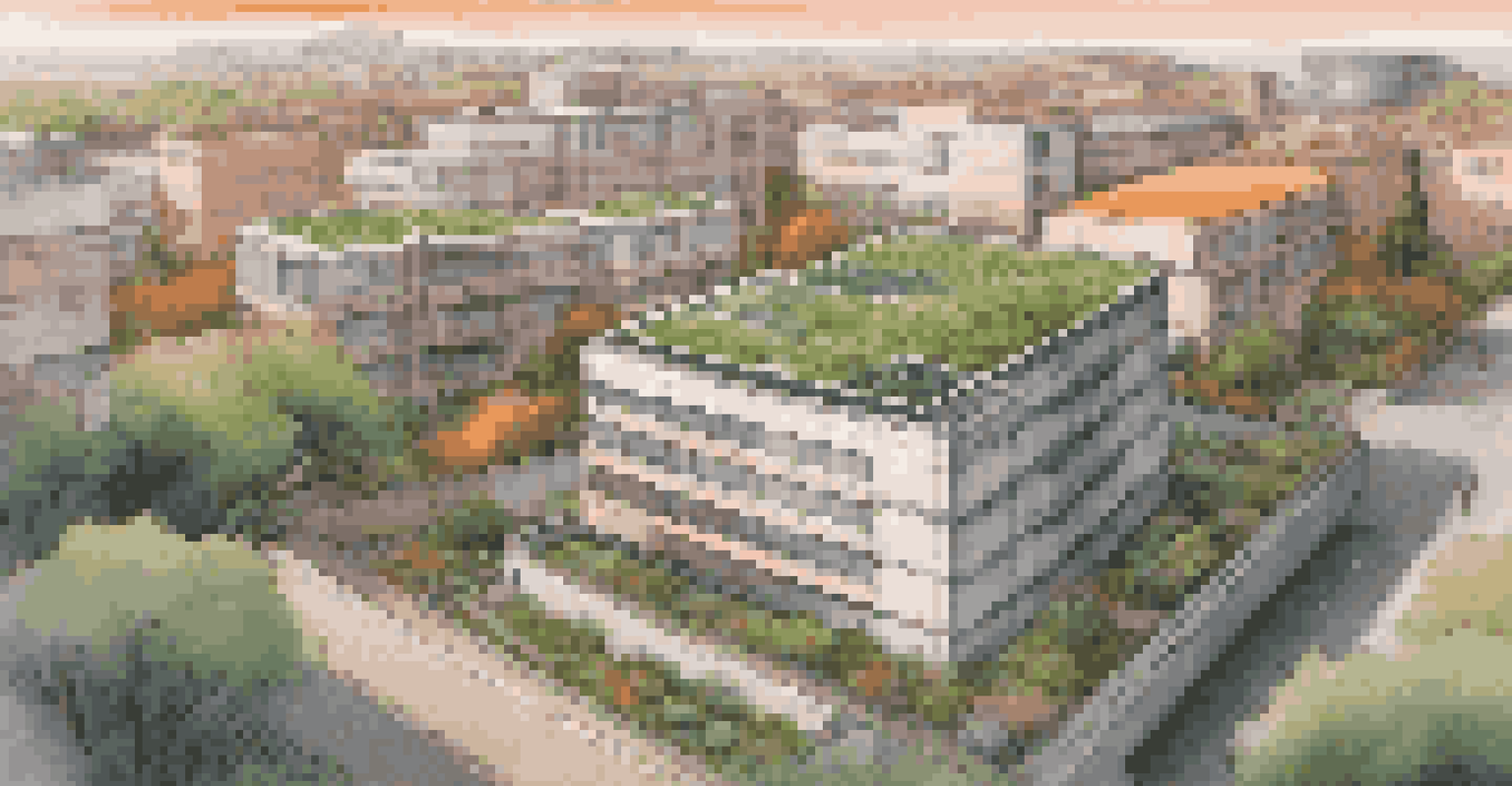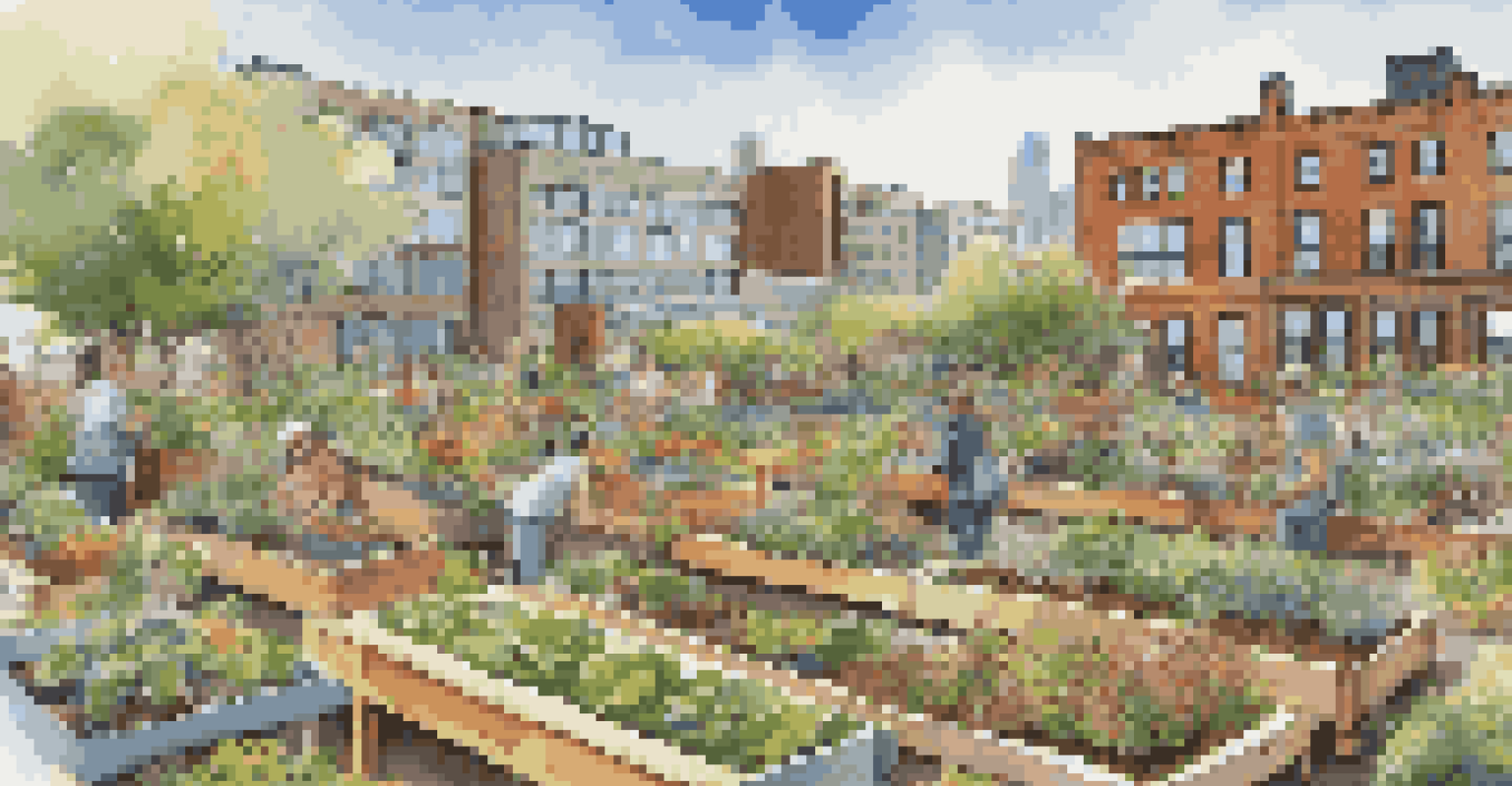The Benefits of Green Roofs: Trends and Long-Term Impacts

What Are Green Roofs and Their Growing Popularity?
Green roofs are layers of vegetation planted on rooftops, providing a unique blend of nature and architecture. They have gained popularity in urban environments due to the increasing need for sustainable building practices. This trend reflects a growing awareness of environmental issues and a desire to create greener living spaces.
Green roofs are not just a trend; they are a necessity for sustainable urban living.
Cities around the world are embracing green roofs as a way to combat urban heat islands, which occur when concrete and asphalt absorb and retain heat. By introducing plants, these roofs help to cool buildings, reduce energy costs, and improve air quality. It's not just about aesthetics; it's about creating healthier cities.
Additionally, green roofs offer a way to manage stormwater effectively. They absorb rainwater, reducing runoff and minimizing the risk of flooding. This innovative approach allows cities to adapt to climate change while enhancing the beauty of urban landscapes.
Environmental Benefits: Enhancing Urban Ecosystems
One of the standout benefits of green roofs is their ability to support biodiversity in urban areas. By providing habitats for birds, insects, and other wildlife, these roofs contribute to healthier ecosystems. This is particularly important in cities where natural habitats are often limited or destroyed.

Furthermore, green roofs help improve air quality by filtering pollutants and absorbing carbon dioxide. The plants act as natural air purifiers, making our cities more livable. Imagine stepping outside and breathing in cleaner air, all thanks to the green spaces above our heads.
Green Roofs Boost Urban Ecosystems
Green roofs enhance biodiversity and air quality, creating healthier urban environments.
In addition to air quality, green roofs play a crucial role in temperature regulation. They provide insulation for buildings, which means less energy is needed for heating and cooling. This not only reduces greenhouse gas emissions but also lowers energy bills for homeowners and businesses.
Economic Advantages: Saving Money and Increasing Value
Investing in green roofs can lead to significant economic benefits for property owners. While the initial installation cost may be higher, the long-term savings on energy bills can be substantial. Over time, these roofs pay for themselves through reduced utility costs and maintenance expenses.
The best time to plant a tree was 20 years ago. The second best time is now.
Moreover, properties with green roofs often see an increase in market value. As more people prioritize sustainability, having a green roof can make a property more appealing to potential buyers or renters. It’s like adding a unique feature that sets your home apart in a crowded market.
Additionally, green roofs can also extend the lifespan of a roof by protecting it from harsh weather conditions. This means fewer repairs and replacements, contributing to overall cost savings for property owners. It's an investment that not only pays off financially but also elevates the property’s environmental profile.
Social Benefits: Improving Quality of Life
Green roofs do more than just enhance buildings; they improve the quality of life for residents and workers alike. These spaces can serve as community gardens, recreational areas, or simply places to relax amidst nature. They provide a much-needed escape from the hustle and bustle of city life.
Studies have shown that access to green spaces can reduce stress and promote mental well-being. Imagine having a peaceful oasis just a few floors above you, where you can unwind and enjoy the beauty of nature. This aspect of green roofs contributes to healthier, happier communities.
Economic Benefits of Green Roofs
Investing in green roofs can lead to significant long-term savings and increased property value.
Moreover, green roofs can foster social connections. Community gardening initiatives on these roofs can bring neighbors together, encouraging collaboration and a sense of belonging. It's a wonderful way to build relationships while contributing to environmental sustainability.
Trends in Green Roof Technology and Design
The world of green roofs is continuously evolving, with new technologies and designs emerging to maximize their benefits. Innovations in lightweight materials, irrigation systems, and plant selection are making it easier to implement green roofs in various settings. This trend is encouraging more architects and builders to consider green roofs in their projects.
One exciting development is the use of modular green roof systems, which allow for easy installation and maintenance. These pre-planted modules can be quickly assembled, making green roofs more accessible to a wider range of buildings. It's a game-changer for those looking to incorporate greenery into their urban spaces.
Additionally, smart technology is being integrated into green roof systems. Sensors can monitor soil moisture and weather conditions, ensuring optimal plant health while conserving water. This blend of technology and nature is paving the way for a sustainable future in urban planning.
Challenges and Considerations in Implementing Green Roofs
While the benefits of green roofs are numerous, there are challenges to consider when implementing them. One of the primary concerns is the structural integrity of existing buildings. Not all roofs can support the additional weight of soil and plants, which is why a thorough assessment is crucial before installation.
Another challenge is the ongoing maintenance required to keep green roofs healthy. Regular care, such as watering, weeding, and plant replacement, is vital to ensure that these roofs thrive. Property owners must be prepared for this commitment to reap the long-term rewards.
Green Roofs Improve Community Life
These green spaces provide recreational areas that promote mental well-being and foster social connections.
Lastly, there can be regulatory hurdles to navigate. Local building codes and zoning laws may impact the feasibility of green roofs in certain areas. Understanding these regulations is essential for successful project planning and execution, ensuring that green roofs are not only beautiful but also compliant.
Future Outlook: The Role of Green Roofs in Sustainable Cities
As urban areas continue to grow, the role of green roofs in sustainable city planning will become increasingly important. They offer a viable solution to combat the challenges posed by urbanization, such as heat islands and limited green space. The future of our cities may depend on embracing these green innovations.
Moreover, as climate change continues to affect our environment, green roofs can play a crucial role in enhancing urban resilience. By managing stormwater and improving air quality, they contribute to more sustainable, livable communities. It's about creating cities that can adapt and thrive in the face of environmental challenges.

In conclusion, the benefits of green roofs extend far beyond aesthetics. They represent a holistic approach to urban living, integrating nature into our built environment. As awareness grows and technology advances, we can expect to see a rise in green roofs, shaping the future of sustainable urban landscapes.